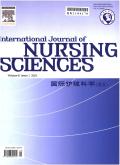开发配偶包容性数字应用程序以预防围产期抑郁和焦虑的框架
IF 3.1
3区 医学
Q1 NURSING
引用次数: 0
摘要
目的数字方法已被证明对缓解围产期抑郁和焦虑症状有效。然而,目前关于围产期心理健康的在线申请往往排除了配偶在干预中的作用。本研究旨在基于女性、配偶和专家的观点,开发一个包含配偶的围产期抑郁和焦虑数字化自我管理框架。方法通过两个阶段的研究形成配偶包容框架。在第一阶段,采用一般定性研究设计,在苏丹艾哈迈德沙阿医疗中心和坎塞勒Tuanku Muhriz医院的妇产科诊所对20名围产期妇女(有抑郁和焦虑症状)和15名男子(配偶)进行了深入访谈。在世界卫生组织的数字自我护理框架和现有文献综述的指导下,使用第一阶段的研究结果来开发配偶包容框架。在第二阶段,进行了两轮专家评审:第一轮涉及内容效度指数(CVI)验证,第二轮包括焦点小组讨论(FGD)会议,以完善拟议的框架。我们提出了一个名为i-PartnerPulse的框架,其中包括三个主要部分:功能(参与者简介,活动计划和;提醒,目标设定& &;奖励系统,成功案例),旨在提高用户在应用使用过程中的动机;内容(评估、干预和进一步行动),旨在教育双方配偶的角色、心理教育和基本技能;方法(良好的用户体验、交互式用户界面、共享会话、压力消除器)旨在始终如一地吸引用户。共有10位心理学、卫生保健和技术专家对该框架进行了验证,平均CVI为0.88,表明该框架的有效性。结论配偶包容框架可有效开发围产期抑郁焦虑自我护理应用。研究人员、学者和软件开发人员可以利用这个框架来创建全面的干预措施,旨在增强患者的能力,并解决围产期抑郁和焦虑的风险。本文章由计算机程序翻译,如有差异,请以英文原文为准。
A framework for developing spouse-inclusive digital applications in preventing perinatal depression and anxiety
Objective
Digital approaches have proven effective in alleviating symptoms of perinatal depression and anxiety. However, current online applications for perinatal mental health often exclude the role of spouses in the intervention. This study aimed to develop a spouse-inclusive framework for digital self-management of perinatal depression and anxiety based on the women, spouses, and experts’ viewpoints.
Methods
The spouse-inclusive framework was developed through two phases of study. In phase I, using a generic qualitative research design, in-depth interviews were conducted with 20 perinatal women (with symptoms of depression and anxiety) and 15 men (spouses) in the obstetrics and gynecology clinics in Sultan Ahmad Shah Medical Centre and Hospital Canselor Tuanku Muhriz. Findings from phase I were used to develop the spouse-inclusive framework, guided by the Digital Self-Care Framework by the WHO and existing literature review. In phase II, two rounds of expert reviews were conducted: the first round involved Content Validity Index (CVI) validation, and the second round consisted of focus-group discussion (FGD) sessions to refine the proposed framework.
Results
We proposed a framework known as i-PartnerPulse, which included three main sections: functions (participants’ profile, activity planning & reminder, goal setting & reward system, success stories), aimed at enhancing user motivation during app usage; contents (assessment, intervention, and further action), aimed to educate both parties on the spouse’s role, psychoeducation, and essential skills; approaches (good user experience, interactive user interface, sharing session, stress busters), aimed to engage users consistently. A total of 10 experts in psychology, healthcare, and technology validated the framework with an average CVI of 0.88, indicating the validity of the framework.
Conclusion
The findings suggest that a spouse-inclusive framework can be effectively used to develop self-care applications for perinatal depression and anxiety. Researchers, academics, and software developers can utilize this framework to create comprehensive interventions aimed at empowering patients and addressing the risks of depression and anxiety during the perinatal period.
求助全文
通过发布文献求助,成功后即可免费获取论文全文。
去求助
来源期刊

International Journal of Nursing Sciences
Nursing-Nursing (all)
CiteScore
6.10
自引率
2.60%
发文量
408
审稿时长
25 days
期刊介绍:
This journal aims to promote excellence in nursing and health care through the dissemination of the latest, evidence-based, peer-reviewed clinical information and original research, providing an international platform for exchanging knowledge, research findings and nursing practice experience. This journal covers a wide range of nursing topics such as advanced nursing practice, bio-psychosocial issues related to health, cultural perspectives, lifestyle change as a component of health promotion, chronic disease, including end-of-life care, family care giving. IJNSS publishes four issues per year in Jan/Apr/Jul/Oct. IJNSS intended readership includes practicing nurses in all spheres and at all levels who are committed to advancing practice and professional development on the basis of new knowledge and evidence; managers and senior members of the nursing; nurse educators and nursing students etc. IJNSS seeks to enrich insight into clinical need and the implications for nursing intervention and models of service delivery. Contributions are welcomed from other health professions on issues that have a direct impact on nursing practice.
 求助内容:
求助内容: 应助结果提醒方式:
应助结果提醒方式:


